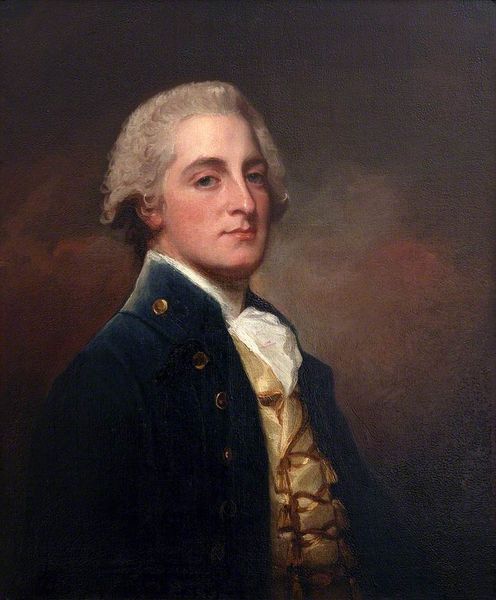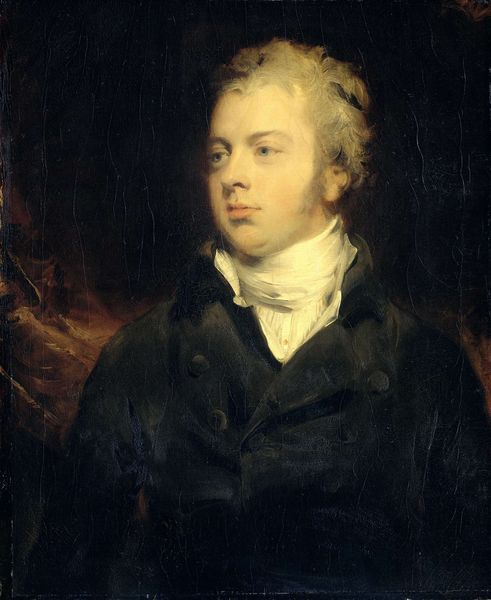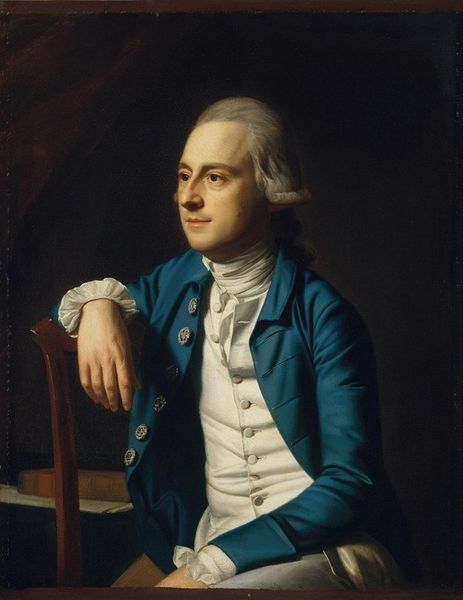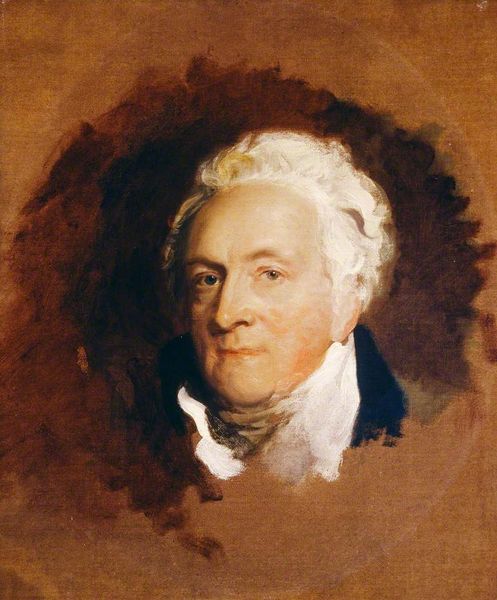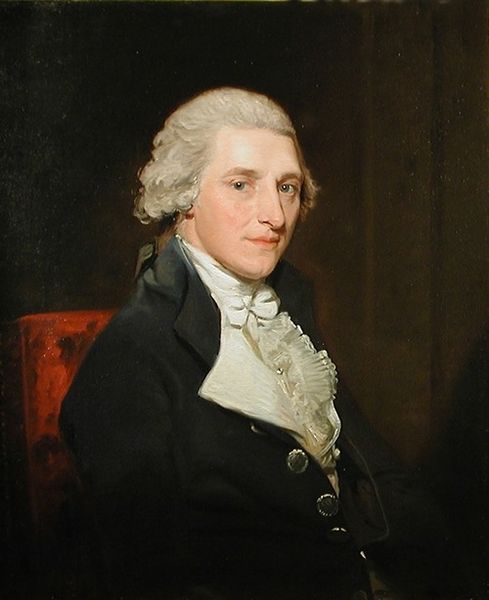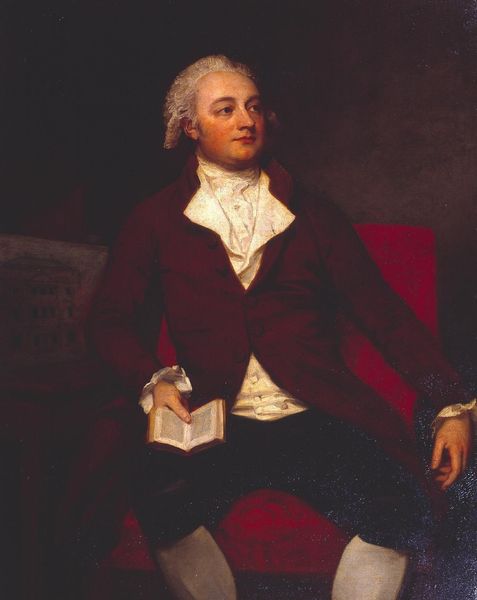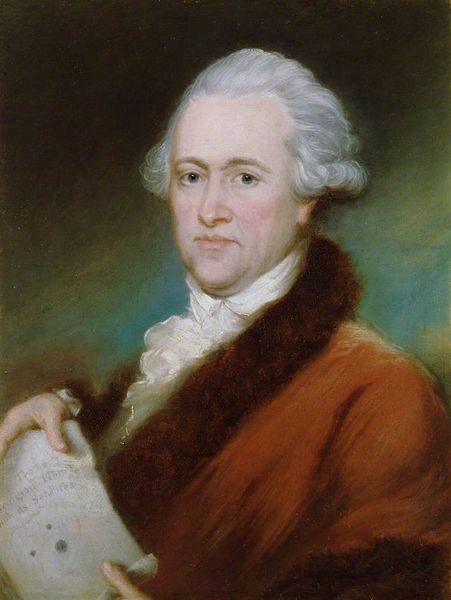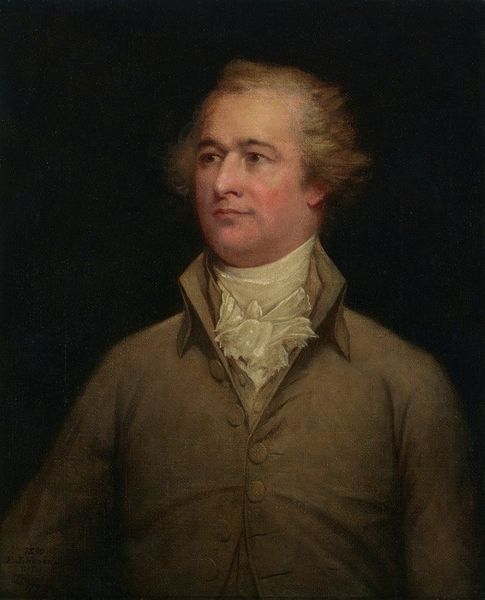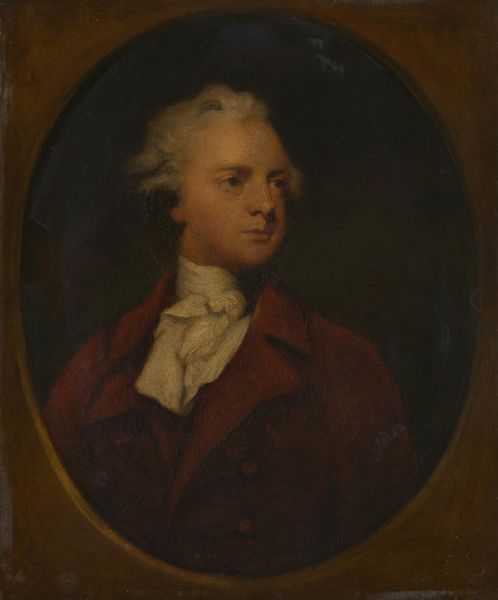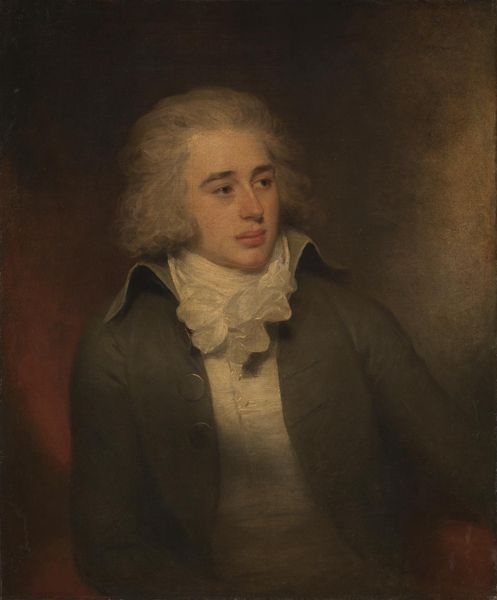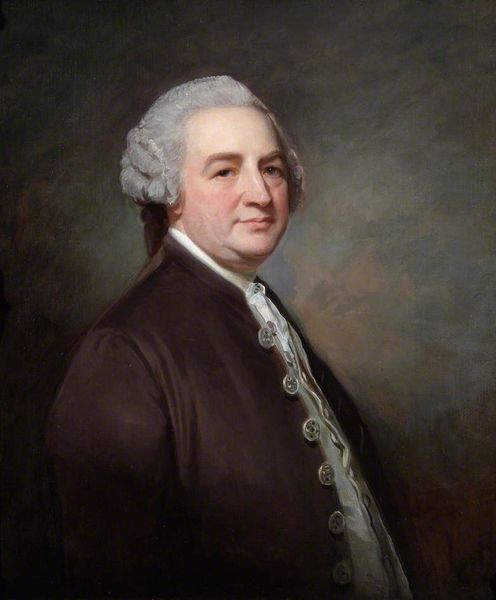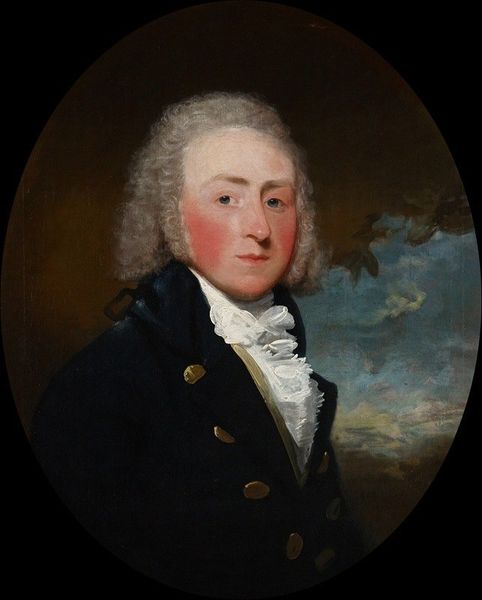
Copyright: Public domain
Editor: Here we have George Romney's portrait of Philip Yorke, the 3rd Earl of Hardwicke, painted in 1781. It’s quite striking, a little formal perhaps, but with this interesting softness in the face... almost a touch of shyness. What draws your eye when you look at this piece? Curator: It’s fascinating how Romney uses color and composition to signal Yorke’s status, yet simultaneously infuses him with a sense of intellectual depth. The gaze is direct, but softened, and the dark coat, while signaling power, isn't harsh. The red chair almost hints at something hidden. Consider, what do these elements evoke for you about the sitter's inner world, or his public role? Editor: The red does add an element of the unexpected. Maybe a little fire beneath the surface? I hadn't thought of it like that. The colors, beyond the red, feel very deliberate and controlled, not too showy. Curator: Exactly. That restrained palette speaks volumes. In the late 18th century, portraits were as much about conveying cultural ideals as likeness. Consider the significance of Yorke's membership in the Royal Society – a detail not explicitly shown, yet subtly implied through his demeanor. It also highlights the emergence of new forms of social, economic, and cultural capital beyond the landed gentry of the previous generation. Editor: So, it's about what's *not* there, too? Interesting. It almost feels like a coded message to his contemporaries. Curator: Precisely! Artists of the era excelled at crafting images imbued with symbolic meaning. These paintings are a fascinating portal into the mindsets of previous centuries. And what they found most important. Editor: I’ll definitely look at portraits differently from now on. It really does tell a story, even in the silences. Curator: Indeed, every element speaks, whispers, or shouts, depending on how you choose to listen.
Comments
No comments
Be the first to comment and join the conversation on the ultimate creative platform.

